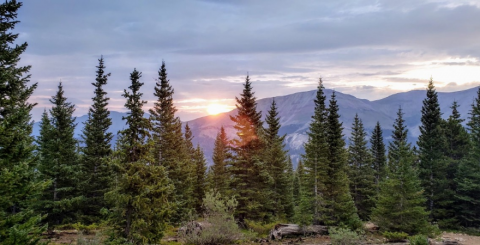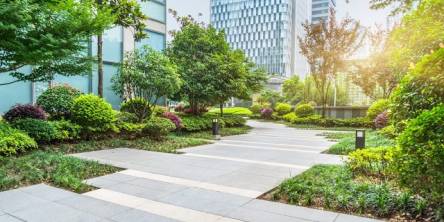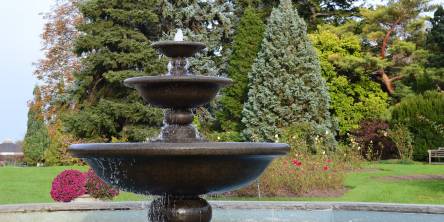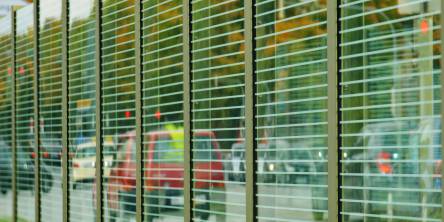Common Pine Tree Diseases

Pine trees, found commonly in the Northern Hemisphere belong to the genus Pinus in the family Pinaceae.
In favorable conditions, they can grow from anywhere between a few feet to a few hundred feet tall. They have a long lifespan that ranges from anywhere between one hundred years to thousands of years old.
The most common of all pines are White Pine, Red Pine or a Spruce. Pine trees have significant economic value because of their timber as well as their wood pulp. They also have a symbolic significance in the Christmas holiday.
Despite being able to live for many years, these beautiful trees do develop diseases that range from a simple color distortion of the leaves to more severe ones that can be deadly.
Some of the most common ones are listed below.
Pine Wilt
Pine wilt is one of the most common diseases found in pines. It is also a very deadly ailment, as its onset is usually sudden, making it harder to detect. This disease is caused by an organism known as a pinewood nematode, specifically Bursaphelenchus xylophilus.
Nematodes are carried by the pine sawyer beetle Monochamus alternatus, from one tree to another.

The nematode interrupts the normal transport system of water within the tree by creating pockets of tiny bubbles in the xylem tissue. Within weeks, the infected tree begins to show signs of yellowing around the leaves and if left unchecked, eventually leads to the death of the tree.
Symptoms
The prominent sign of infection is the change in the color of the leaves, they can turn from the characteristic deep green to anywhere from a gray-greenish, yellow or brown. Please note; the changing of the needle’s colors is not enough to diagnosis Pine Wilt, so it is mandatory to run a lab test to determine the next course of action.

Treatment
Unfortunately, this disease has no cure, and once a tree is infected, it cannot be saved. Prevention of further contamination of healthy trees should be speedily encouraged to prevent additional loss. After a confirmatory lab test, all infected trees should be burned immediately or cut down and chipped.
White Pine Blister Rust
As the name implies, it is peculiar to only White Pine Trees when the temperature is cooler, thus appearing more in the fall and at times around late summer. Its preference for temperature and white pines in specific makes it more prevalent in the north-eastern parts of America. Although the disease is thought to have originated from Asia.
The ailment is caused by a species of rust fungus called Cronartium ribicola.
The main trunk of the tree is rarely ever infected first. The disease usually starts off on a side branch and spreads to healthier tissues. The rust fungus does not harm the carrier host but can be deadly once they spread to the trunk of the infected pine tree.

Symptoms
The first sign of infection is often the discoloration that affects the needles of the tree as they wither and die. They often take on a red or bright yellow appearance. As the disease advances, it begins to affect the branches and its distinguishing effect becomes much more evident.
Cankers develop around the bark of the tree, in a spindle-like fashion. The blister rust canker is fed on by rodents and takes on an orange coloration around the edges, subsequently, “flagging” the tree.
Treatment
Once the main stem of the tree is infected, little can be done. If the canker forms in the upper parts of the plant, it should be cut off from at least a foot below the ‘flag.’ Side branches are easier to deal with as they can easily be pruned and removed from the other parts of the tree which remain uninfected.
Prevention could include strategic placements of white pine trees and ribe plants, with a distance of at least 1500 feet. Planting of white pines in high sloped and more temperate regions should also be encouraged.
Where there is a group planting of trees, an option is to completely remove the pine tree to prevent infection of neighboring trees.
Cyclaneuma Needle Cast
Cyclaneuma Needlecast is a fungal disease that is most commonly found in Scots pine. Although it can also infect ponderosa pines and Austrian pines. The disease is spread by the Ascomycete, cyclaneusma minus. Thus it presents with a sexual and asexual stage of dispersion, making it harder to combat. Needles are first infected during the rainy season when fruit bodies open and their ascospores are dispersed by the wind. These spores are highly resistant and can live on trees for as long as a year, and all through winter.
Symptoms
The internal needles of the tree are first affected, taking on a yellow tint which may progressively darken as the infection progresses. The needles also present with horizontal bands on their bodies. Newer needles on the outer parts of the plant are often unaffected unless there is premature shedding.

Treatment
Infected needles should be removed from the trees to prevent those infecting healthy leaves with their spores. Maintaining the integrity of air circulation is an effective means of prevention.
The use of the right fungicide is also encouraged, although hard to implement in forest areas. Topological planting of the prominently affected plants, in areas that are shaded and have good drainage, can also help in avoiding the disease.
Similar Articles
In today’s world, sustainability is no longer just a trend it's a necessity. As travelers become more eco-conscious, businesses in the tourism and leisure industries, especially resorts and parks, are adopting greener practices to stay relevant and competitive.
Enhance your outdoor space with expert landscaping. Create a beautiful, functional retreat with the right plants, hardscaping, lighting, and design principles.
Discover the unseen value of outdoor benches in enhancing public spaces, fostering community, boosting economy, and promoting sustainability with smart design.
In order to turn outside areas into stunning, practical, and sustainable settings, professional landscaping businesses are essential. Their knowledge extends beyond aesthetics; they can handle anything from hardscape building to plant health.
Discover VersiScape: a groundbreaking solution revolutionizing urban landscaping with green walls, roofs, stormwater management, and sustainable design.
Discover why quality landscaping supplies are essential for a stunning yard. Learn how the right tools, soil, and materials can transform your garden.
An excellent landscape design will maximize your outdoor space to a working and beautiful space t
In recent years, there has been a movement among architects to create more sustainable and livable cities. This has led to a new approach to global city planning that focuses on creating spaces that are pedestrian-friendly, environmentally friendly, and that encourage social interaction.
Fencing has always been a popular idea for building construction. It offers security to the enclosed premise and beauty to the overall structure. Be it the house, the farm, or an orchard; fencing is considered to be an integral part of the construction.









